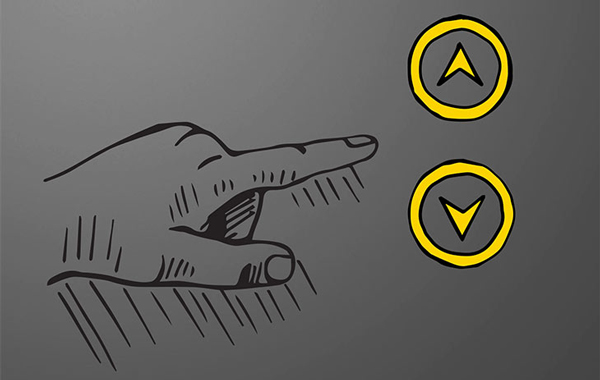If there’s one thing budding copywriters should know, it’s this: copywriting is both an art and a science.
It’s artistic because it’s emotionally driven. It sets a tone ready to inflict readers with emotion, whether it’s joy, shame, or hopefulness.
It’s scientific because it’s grounded on tests and trials. A copy that fails to attain its objective—to convert—is not a good one. Even if another copy sounds a little off, as long as it converts, it’s a winner.
That said, all of that barely scratches the surface of what constitutes a good copy. Discover these top copywriting tips to help you become an awesome copywriter.
Write as You Speak

The text doesn’t have to be filled with jargon or subject-matter expertise. You’re writing for a general audience—a person.
To get them to read it from start to finish, you have to write in simple words. Talk as if you’re enjoying coffeehouse chatter with them in an ambient cafe.
A delicate balance must be met during the construction of the text. Not too simple that you’ll erode the trust of your readers. But not too technical that your message flies over their heads, or worse, stops them from reading it altogether.
Good copies aren’t meant to scratch heads. Effective copies work because they’re clear, compelling, and easy to follow.
Impressions Matter, Your Headline Matters
The title is the first and, in some cases, the only piece of your writing that your reader will get to see. It holds the key to whether your reader will click the page or not. Without a great, attention-grabbing headline, the text you’ve labored so hard for will be for naught.
There are three common headline types to consider when you’re first starting. These are:
| Type | Example Headline |
| How-To Type Headlines | How to Excel in Copywriting |
| … + Reasons Why +… | 10 Reasons Why Copywriting Works |
| Pain Point + Solution | X Guidelines for Copywriting Newbies |
There’s much more than those listed above—but these are the most common types of copywriting titles out there.
According to marketing guru Neil Patel, “[Your title is] arguably the most important part of your content.” If your copywriting headline doesn’t encourage the reader to click through, then they’ll fall off the funnel at the earliest possible moment. That’s, obviously, no good.
Set Up a Suave Call to Action
An effective CTA is crucial when writing a solid copy. A great one will make your conversion rates explode with potential clients.
A call to action (CTA) is an invitation to the reader to act upon the desired action. It can be something like getting them to sign up for a free eBook in your email list. It could also be encouraging them to purchase an eCommerce store’s lovely products.
Whatever the case, the call to action is the most critical part of the copy. That’s why it needs to be written with your target audience etched in your mind.
Writing a good copywriting CTA considers:
- The goal you’re trying to achieve
- Good use of action verbs (i.g. “Shop Now”)
- Relevancy to the copywriting text
All that said, you’ll have to exercise your copywriting skills to get started. If you’ve heard all about freelance writers and want to learn how to become one, master writing copy with an SEO Copywriting course.
Stop Writing When You Feel Juiced Out
One of the most dangerous things when writing a copy is a quota breathing the back of your neck.
Do you feel that you’re stretching yourself to reach a word count that exceeds half a thousand more words? You may be thinning the impact of your copy—whether it’s social media posts or an article—by bloating it and filling it with unneeded words or convoluted ideas.
Don’t be afraid to call it quits if you feel you can’t stir up any more valuable insights in your piece. Less can oftentimes be more.
Work With an Outline
Writing with a proper outline helps organize your thoughts. It also ensures that you don’t go off-topic and forget what you’re writing about.
An outline doesn’t have to be too specific to get started. You can list down some bullet points in your Notepad software and switch up the content there as necessary. For most copies, you can consider writing an AIDA outline—which stands for Awareness, Interest, Desire, and Action.
Contrary to what a few critics might say, writing outlines doesn’t necessarily stump your creativity. Rather, it reinforces it and helps you create more relevant copies that abide by the guidelines and the end goal.
Tell a Compelling Story
They Laughed At Him… But Look How Far He’s Come Now”

Sparks a little bit of intrigue, ay? Copywriting is all about holding your reader’s attention for as long as possible. Copywriters know the power of a good story—how it can hook readers in with promises and a journey that’s worth venturing into.
The story you weave is the one that does the heavy lifting for you. If done well, it draws your customer closer to the conversion.
Whether you write a web blog or a video script, a compelling story that tugs a reader’s heartstrings can sell your product with more potency than a purely logical blog post.
An effective storytelling technique that copywriters love to use for story-based copies is the Hero’s Journey. This technique is a template that involves a protagonist (that your reader can put their shoes on) who goes through trials and tribulations to overcome them at the end of it.
While it may not be relevant for some copies (like if you’re selling coffins or chalkboards—unless you’re really creative), it adds a human element that enhances the relatability of your brand. This could, in turn, lead to conversions. For a copywriter, that’s exactly what you’re writing for!
Get Your Hands On a Swipe File

No matter whether you’re a beginner or expert copywriter, swipe files are excellent tools that can help you in case you’re on a creativity stump. A swipe file is a collection of ads, emails, and other copywriting material that you love and are particularly fond of.
By having a swipe file, you’ll gain a crutch for the moments where you feel a little bit stuck in your writing. It jumpstarts your creativity and helps you start writing your body copy faster instead of dawdling and thinking of which words to use.
Study a Course to Sell Your Copywriting and Online Skills
Between you and me, the full extent of copywriting can’t be fleshed out in just one blog post.
But you can learn more about it through other means: one is by practicing copywriting frequently, another is by learning the skill in a structured environment.
From becoming an SEO Copywriter to an eCommerce Copywriter, you can learn expert tips on the ins and outs of your desired field.
The best part? You can learn everything at your own pace through our high-quality, exclusive course offering.

